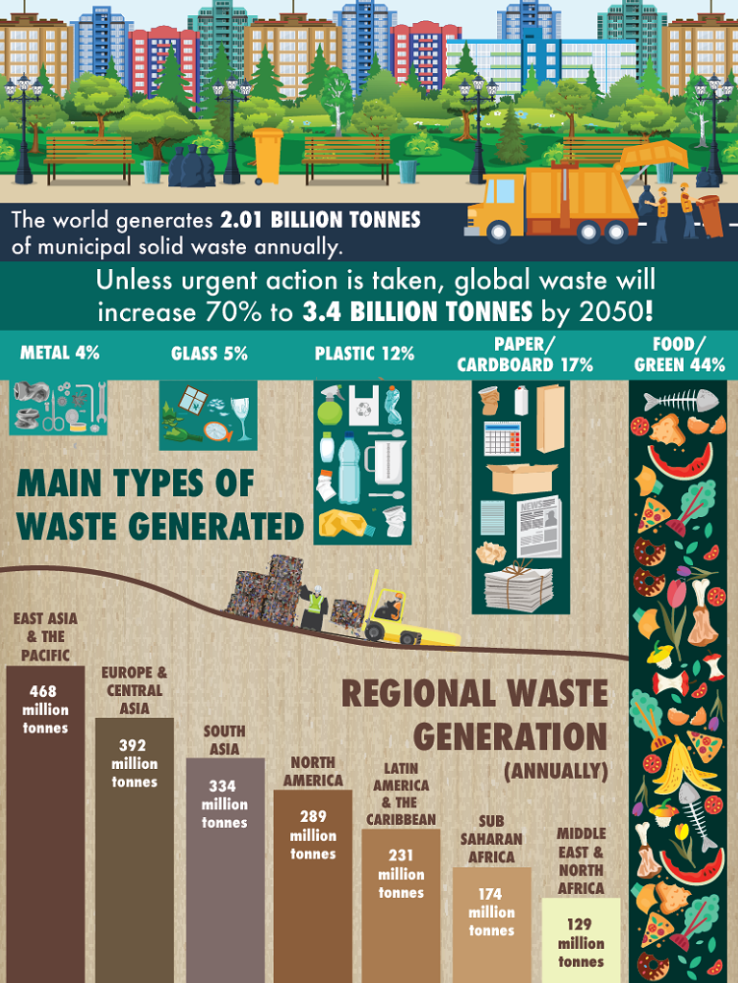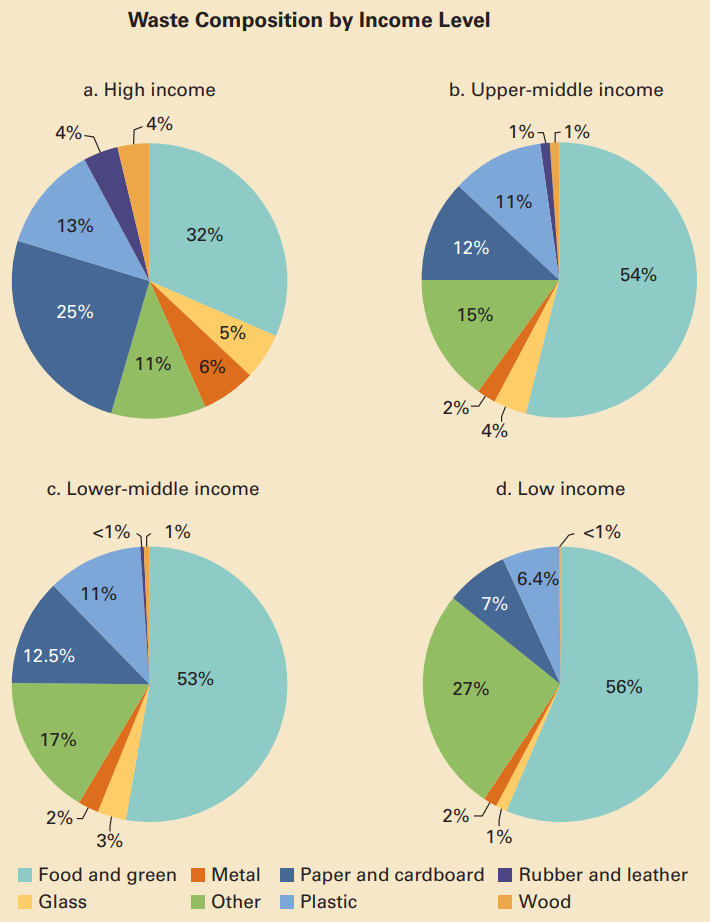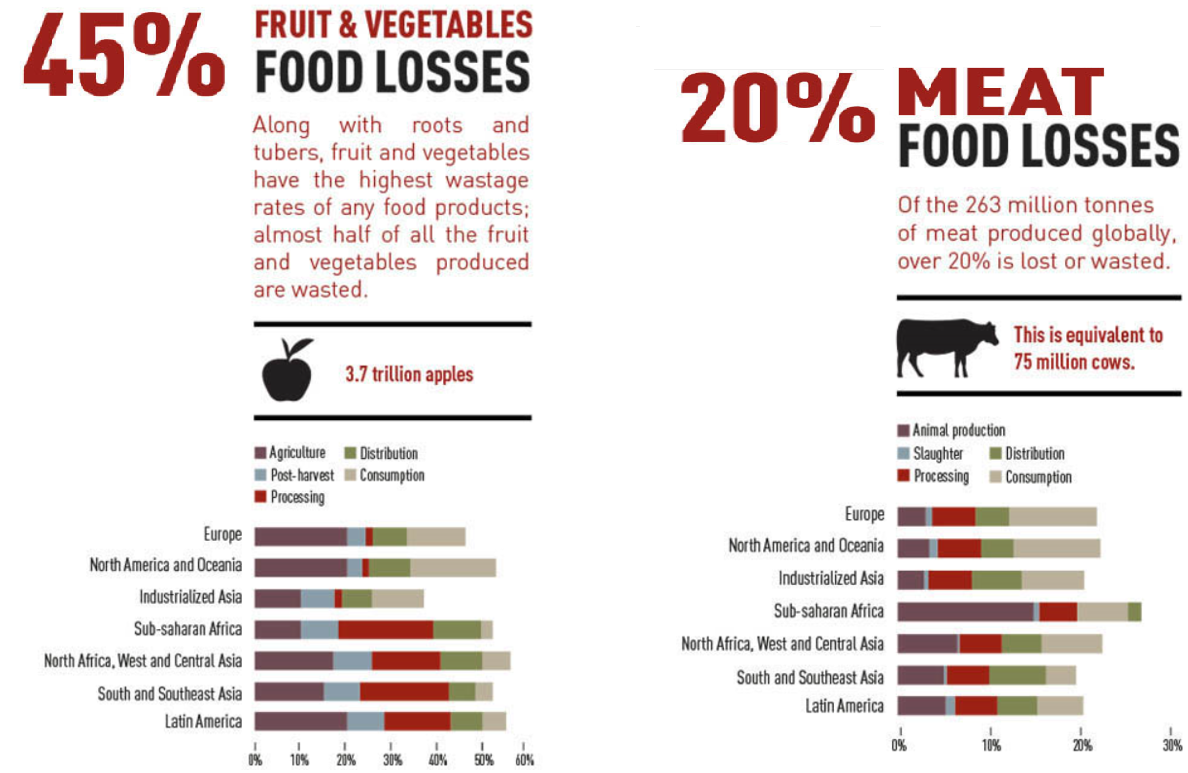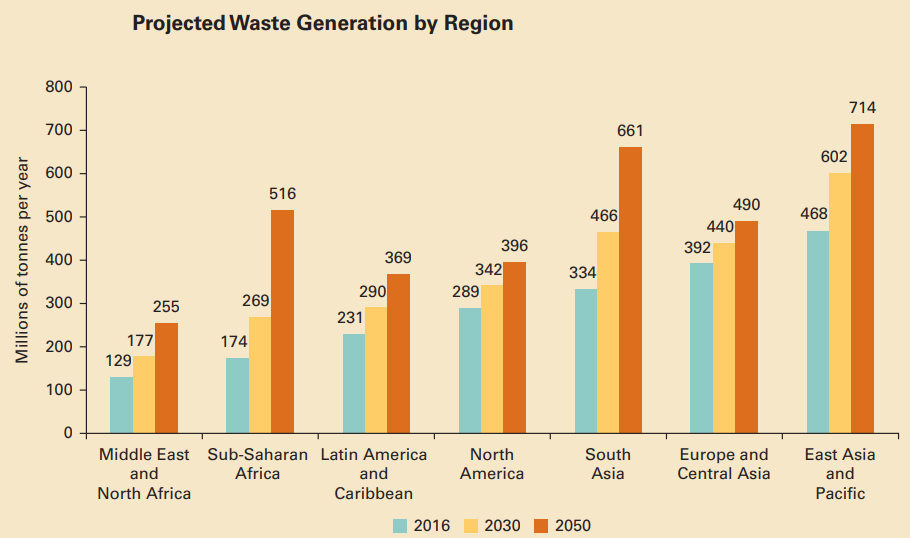MOOC: Auditing waste management
1.2. Global generation of waste
Given the varying waste classifications and gaps or overlaps in waste data, the provision of an accurate global overview of total waste generation is a challenge. Global data on waste is most elaborate on the municipal solid waste sector, but this is only part of the whole picture. Given the gaps in data, estimation about other types of wastes are not very exact, but it has been estimated that these are generated in significantly larger volumes. Most prominently, industrial waste streams have been found to be 18 times higher than the streams of municipal solid waste. Agricultural, construction and demolition wastes are globally generated in comparable amounts to that of municipal solid waste. Less voluminious but also important are hazardous, medical and electronic waste. []
In this section, detailed data and trends will be presented on municipal waste only as many waste audits focus on this waste type. But it is important to bear in mind upon scrutinizing national waste data that other special types of wastes can also be relevant.
According to World Bank, without urgent action, global municipal solid waste production will increase (see Figure 3). In low-income countries, over 90% of waste is mismanaged.
Figure 3. Global solid waste management (2016) []
Lower-income countries produce a relatively higher proportion of organic waste, while in higher-income countries, paper and other inorganic materials also make up a significant share of the total (see Figure 4).
Figure 4. Variation in waste composition grouped by national income levels (2016) []
In case of food waste, roughly one-third of the food produced in the world for human consumption every year – approximately 1.3 billion tonnes is lost or wasted []. Food loss and food waste are often separately distinguished, with food loss referring to food produced but not consumed before reaching consumers due to bruising wilting etc. in the earlier stages of production and transport, and food waste meaning the discarding of good quality food at the retail or consumer end of the chain.
Industrialized and developing countries dispose of roughly the same quantities of food: 670 and 630 million tonnes, respectively. Every year, consumers in rich countries lose or waste almost as much food (222 million tonnes) as the entire net food production of sub-Saharan Africa (230 million tonnes). In developing countries, 40% of losses and waste occur at post-harvest and processing levels; in industrialized countries, more than 40% of losses and waste of the whole amount of food produced happen at the retail and consumer levels (see Figure 5 with examples on fruit/vegetable and meat food losses).
Figure 5. Food losses – fruits/vegetables and meat []
To view the larger version of the image, use right click and ‘Open image in new tab’
The total quantity of waste generated is expected to increase – notably in Sub-Saharan Africa and South Asia – by 2050 (see Figure 6).
Figure 6. Projected waste generation by region []
 THINKING EXERCISE
THINKING EXERCISE
- What types of waste are generated in the largest quantities in your country? What about specific sectors such as agriculture, forestry, mining, industry?






 THINKING EXERCISE
THINKING EXERCISE